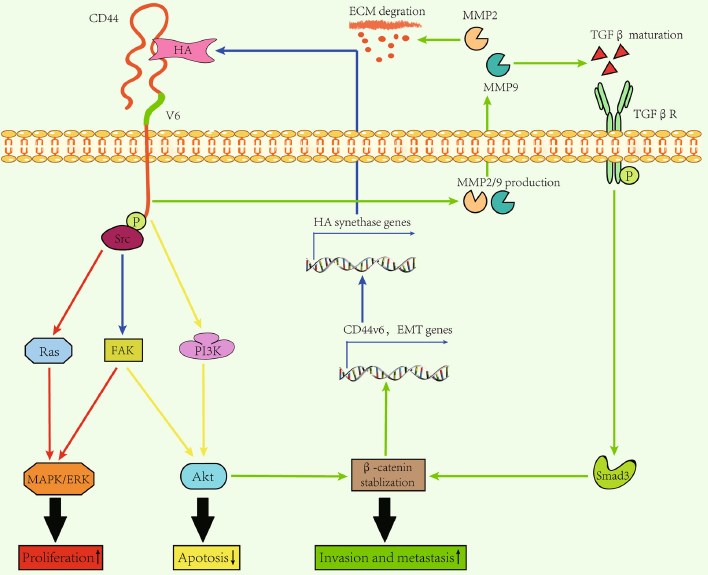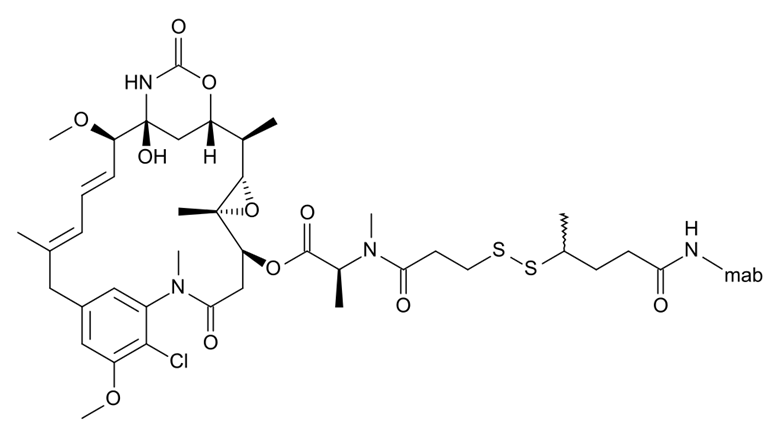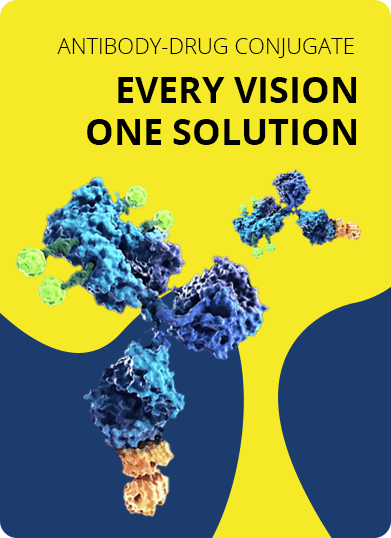- Home
- Applications
- Head and Neck Cancer
- CD44v6
ADC Development Services Targeting CD44v6
The therapeutic activity of conventional therapy is limited by their narrow therapeutic window, indiscriminate cytotoxicity, and poor pharmacokinetics. Antibody-drug conjugates (ADCs) show significant advantages and promising due to its selectivity, favorable pharmacokinetics, bio-distribution and high cytotoxic potency. Creative Biolabs has focused on the ADCs technology for years, we have experts who are able to offer high-quality ADCs design and development services against the CD44v6 marker. Our services include the production of specific antibody, synthesis of highly potent payload and optimal conjugation strategy.
Introduction of CD44v6
CD44 is a transmembrane glycoprotein and is the receptor of hyaluronic acid (HA), which consists of an ectodomain, a transmembrane domain, and a cytoplasmic domain. The N-terminal globular domain at the ectodomain of CD44 is the binding site of HA. CD44 is encoded by the CD44 gene that located at the short arm of chromosome 11 in human. The full-length CD44 gene is composed of 20 exons and 19 introns. The N-terminal and C-terminal regions of the CD44 are encoded by the first five exons and the last five exons, respectively. The intermediate exons encode variant isoforms by the alternative splicing including CD44s, CD44v6, and CD44v4-10. CD44v6 plays important roles in many cellular processes including lymphocyte activation, recirculation and homing, epithelial cell adhesion and migration. CD44v6 also involves in cancer progression because it can promote the colonization and metastasis of cancer stem cells.
 Fig.1 The interaction between CD44v6 and HA.1,2
Fig.1 The interaction between CD44v6 and HA.1,2
Anti-CD44v6 ADC in Head and Neck Cancer
The overexpression of the CD44v6 can induce cancer progression such as the head and neck cancer, thus, CD44v6 is a target used in targeted cancer treatment. Bivatuzumab mertansine is an ADC targeting the CD44v6 antigen, which is composed of an anti-CD44v6 antibody (bivatuzumab) covalently linked to the cytotoxic mertansine. Upon binding to CD44v6, Bivatuzumab mertansine can be internalized and the drug will be released by cleavage of the disulfide bond linker. The ADC has been investigated in the clinical Phase I trial. Results demonstrated that the ADC has potent cytotoxic potency than other clinically used anticancer drugs such as taxanes or anthracyclines. Besides, the ADC showed positive responses in chemotherapy-refractory patients with head and neck cancer without severe toxic effects.
 Fig.2 Overall structure of Bivatuzumab mertansine.
Fig.2 Overall structure of Bivatuzumab mertansine.
What Can We Do for You?
Creative Biolabs is a well-recognized leader in the field of ADC discovery and development. We are dedicated to developing innovative ADCs that has higher specificity and higher potency, to help improve the outcome of the clinical therapy for different types of head and neck cancer.
Our ADCs construction services including:
- ADC Antibody Screening
- DrugLnk™ Custom Synthesis
- Antibody Design and Conjugation
- ADC in vitro Analysis
- ADC in vivo Analysis
Please contact us for more information if you are interested in our services.
References
- Ma, Lixin, Lihua Dong, and Pengyu Chang. "CD44v6 engages in colorectal cancer progression." Cell death & disease 10.1 (2019): 30.
- Distributed under Open Access License CC BY 4.0, without modification.
For Research Use Only. NOT FOR CLINICAL USE.

Online Inquiry
Welcome! For price inquiries, please feel free to contact us through the form on the left side. We will get back to you as soon as possible.
